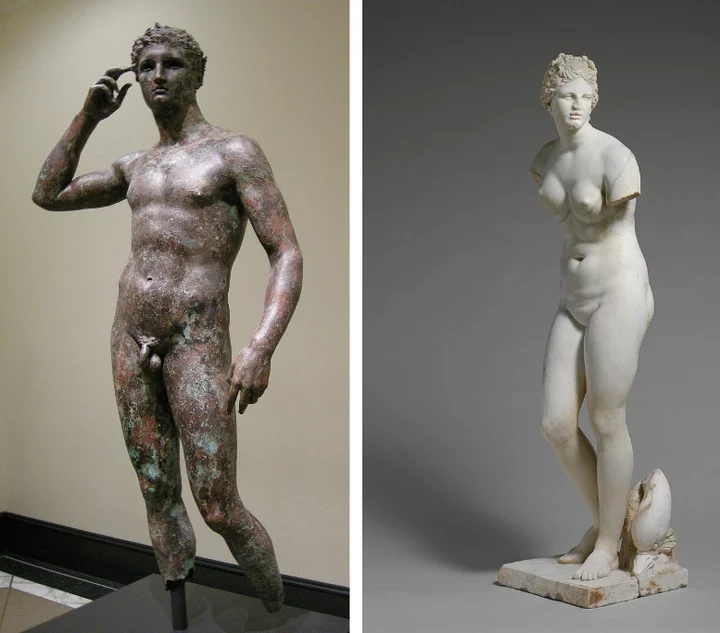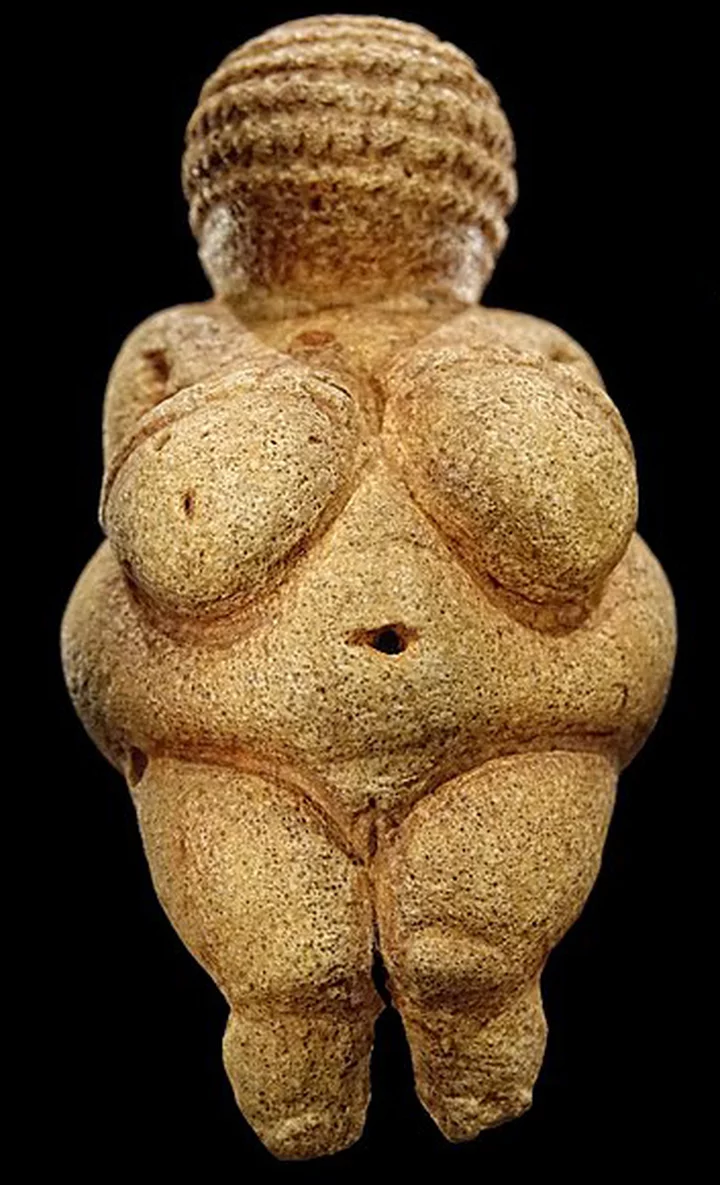If you’ve been following me on the abortion issue, you’ll know I consider the current anti-abortion fever can be explained in one word: misogyny. Very little to do with “right to life” or high-minded morality. Simply note, for instance, that the anti-abortion states are the ones with the least support for single moms and their babies. The US News and World Report recently summed it up: “The decision to overturn Roe v. Wade has made clear that women with the fewest reproductive rights also live in states that provide the least support for babies they’re now forced to birth.” As has been noted repeatedly, “pro-life” apparently means caring about life for just nine months, from conception right through until birth. Then, fugget about it.
I want to make the case that the ancient Greeks were the ones who perfected the notion of misogyny, and that’s apparent in their statuary and the virtually 100% percent absence of female genitals. Thousands of statues of men and women have survived from the flowering of the Greek city-states, roughly 2400 years ago, many of which — perhaps most — are nude. While you can find plenty of penises and balls from those days, you’ll look in vain for any lady-parts. Not a vulva to be seen! Instead of regular female anatomy, the goddesses, nymphs and human women from that era are barren and bare, their labia expurgated to nothingness. (Or else they are clothed, unlike, for the most part, their cocksure male counterparts.)
“Victorious Youth” vs. “Aphrodite” (“Saiko,” GNU License, via Wikimedia; and Metropolitan Museum of Art, Creative Commons 1.0 license, via Wikimedia)
It’s as if the rulers of taste in those days — i.e. men — decided that the role of women was so unimportant that it could safely be ignored. Even giving birth was barely acknowledged: when Apollo defends Orestes, on trial for the murder of his mother, the judge (Athena) is told, “The woman you call mother of the child is not the parent, just a nurse to the seed…The man is the source of life.” (Aeschylus, about 500 BC)
It wasn’t always thus. Feminine statues from earlier times showed the vulva in all its glory. Here (again), for instance, is the famous “Venus of Willendorf,” a four-inch high limestone figure from Lower Austria dated to about 25,000 years ago.
Now in Vienna’s Naturhistorisches Museum. Bjørn Christian Tørrissen, Creative Commons BY-SA 4.0 license, via Wikimedia.
Other cultures didn’t
seem to have the same reticence to depict women as they really are.
In Hindu mythology, Shakti is the fertility goddess, and her yoni
is typically displayed alongside, or being penetrated by, a male
lingam, as here.
Mahasthangarh Museum, Bogra, Bangladesh. Shahnoor Habib Munmun, Creative Commons BY 3.0 license, via Wikimedia.
Much more recently — 2014 — the Japanese artist Megumi Igarashi, AKA Rokudenashiko, was arrested and charged with obscenity for posting a downloadable three-dimensional manko (pussy), scanned from her own body. Two years later, she was convicted and fined nearly $4,000 by a Tokyo court. Meanwhile, an annual festival celebrating the phallus is held annually in Kawasaki, Japan, where representations of erect penises are displayed everywhere in the form of statues, candy and vegetables.
Alex Lozupone, Creative Commons BY -SA 4.0 license, via Wikimedia.
I could go on (and on), but you get the idea. Penis good, vulva bad. Isn’t it time we got over half-baked ideas of the inferiority of women? Starting with rock-solid right-to-abortion laws that can’t be overturned by an ideologically-packed, two-thirds Catholic, Supreme Court, (including three nominated by a president who lost by nearly three million popular votes). The nearly two-thirds of us who support abortion rights deserve as much.
Needed to get that off my chest.




CLICK TO MANAGE